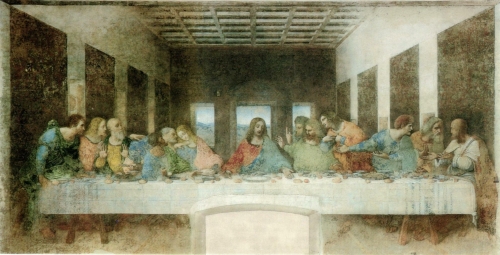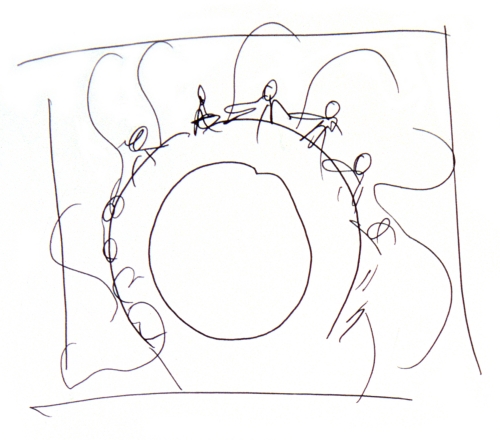Genesis
Judy Chicago’s The Dinner Party began modestly, in both concept and form. From the start, her aim was “to teach a society unversed in women’s history something of the reality of our rich heritage.”1 At first, she conceived of it as a series of twenty-five china-painted plates to hang on a wall, titled Twenty-five Women Who Were Eaten Alive, a reference to the ways in which women had historically been “swallowed up and obscured by history instead of being recognized and honored.”2 Eventually, this idea expanded to include 100 abstract portraits of women on plates.
While planning the project, she visited the home of a professional china-painter who had spent several years producing an elaborate dinner service for 16 people. The settings were arranged in order on the painter’s dining room table. Chicago claims she had an epiphany at that moment, “realizing that plates are meant to be presented on a table.”3 Afterwards, she began to think of the work exclusively within the context of a table setting. The idea appealed to her on many levels because the dinner table itself carried symbolic meaning for women historically. It was the place upon which the meals women prepared were served; and it was located in the private, domestic, “feminine” space versus the public, “masculine” one.

Leonardo da Vinci (Italian, 1452–1519). The Last Supper, 1495–98. Tempera on plaster. Santa Maria delle Grazia, Milan, Italy
When Chicago began thinking of historical precedents for the table, she was immediately drawn to Leonardo da Vinci’s The Last Supper, representing Christ at his last meal surrounded by his twelve disciples. As Chicago explained, “I became amused by the notion of doing a sort of reinterpretation of that all-male event from the point of view of those who had traditionally been expected to prepare the food, then silently disappear from the picture or, in this case, from the picture plane.”4 She began envisioning a reinterpretation of the canonical work with famous women as the honored guests.

Judy Chicago (American, b. 1939). Conceptual Drawing for The Dinner Party, 1975–76. Ink on paper. © Judy Chicago
The earliest sketch in Chicago’s notebooks for The Dinner Party shows that her first idea was to have a circular table with a hollow center around which the guests would be seated. This idea was later modified to become a triangular table, a form having great significance for the artist. The equilateral triangle, interpreted by Chicago as reflecting the “goal of feminism—an equalized world,” is also a centered form recalling “one of the earliest symbols of the feminine,” and of the goddess.5 Once the shape of the table was determined, Chicago decided to place thirteen women on each side, or “wing”—thirteen to mimic the number included in The Last Supper as well as the number of women in a witches’ coven.
Notes
1. Judy Chicago, Beyond the Flower: The Autobiography of a Feminist Artist (New York: Penguin, 1997), 45.
2. Judy Chicago, The Dinner Party: A Symbol of Our Heritage (New York: Anchor Books, 1979), 8.
3. Chicago, Beyond the Flower, 46.
4. Ibid.
5. Chicago, The Dinner Party (1979 ed.), 12.